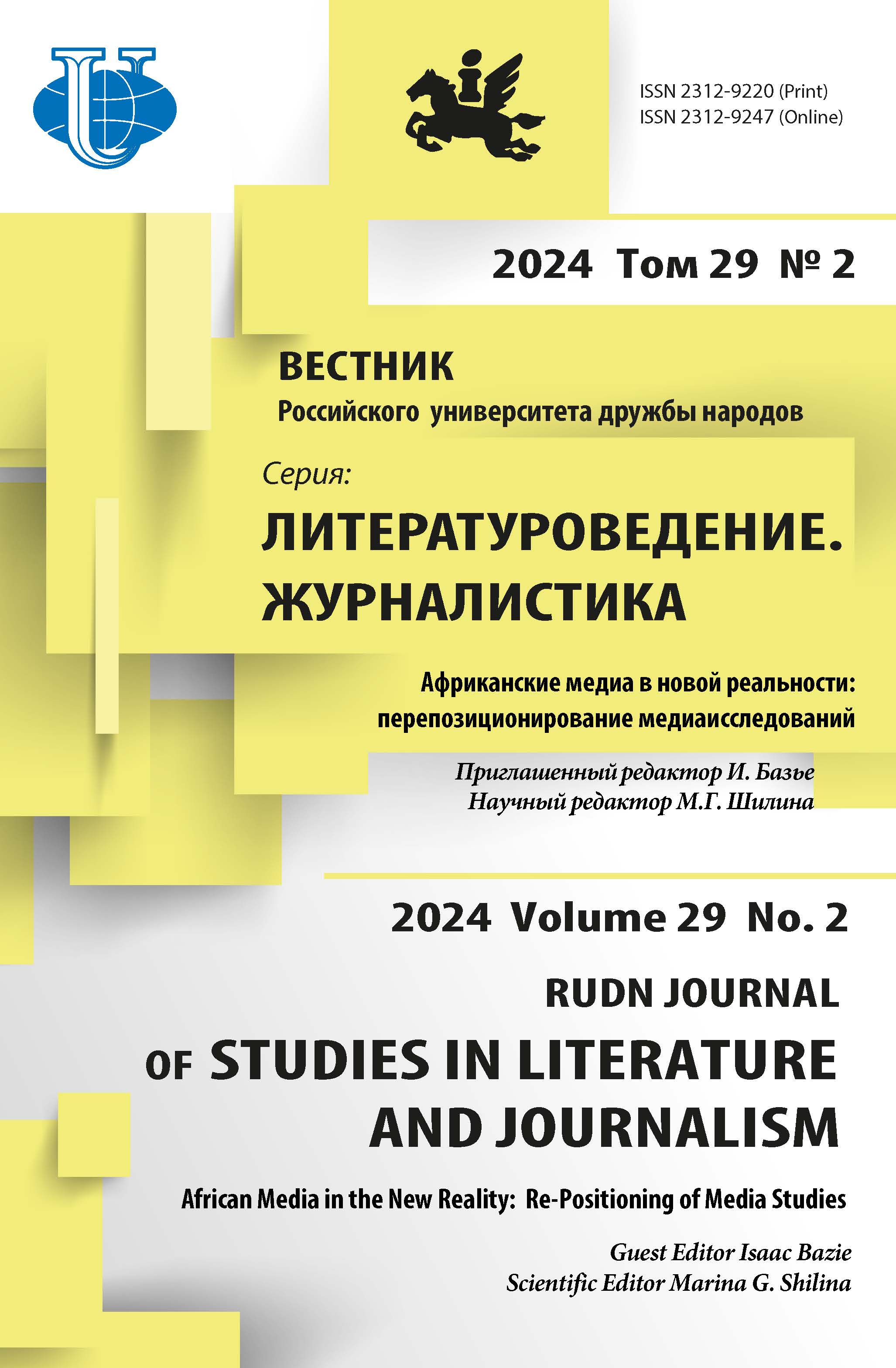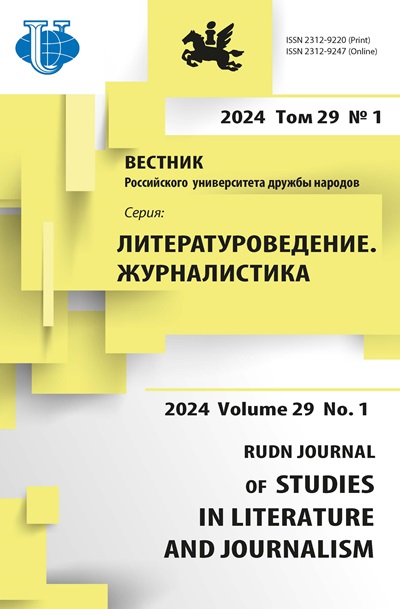Features of media legal regulation in Mongolia
- Authors: Byambajav N.1, Boldbaatar B.1, Skvortsova N.2
-
Affiliations:
- National University of Mongolia
- RUDN University
- Issue: Vol 29, No 1 (2024)
- Pages: 152-163
- Section: JOURNALISM
- URL: https://journals.rudn.ru/literary-criticism/article/view/40034
- DOI: https://doi.org/10.22363/2312-9220-2024-29-1-152-163
- EDN: https://elibrary.ru/IWUOXY
Cite item
Full Text
Abstract
Information and the means of its dissemination are becoming increasingly important in the modern world. Since the final information product is capable of influencing socio-political processes, political forces prone to authoritarianism strive to monopolize the media space, using the regulatory framework and economic resources for this. At the international level, mostly in Western Europe, the legislative approach to the media meets the democratic standards of society and its political and economic interests. The regulatory framework is synchronized with digitalization, technological development of media and public communications, in contrast to countries with unstable economies that adopt both technology and regulatory innovations from the outside. A study of the legislative framework underlying the formation of the media space and communication system of Mongolia demonstrates a number of errors and deviations in the development of press freedom and national journalism. The authors update the issues of independent professional journalistic activity and the need to inform the public, the openness of government institutions and the transparency of their work. Examples are given of violations of the rights of journalists and pressure on commercial media, which affects the quality of the media space, the economic interests of media owners and the rights of citizens.
About the authors
Naranbaatar Byambajav
National University of Mongolia
Author for correspondence.
Email: naranbaatar.b@num.edu.mn
ORCID iD: 0009-0002-7429-8076
Ph.D of Journalism, Associate Professor, Head of the Department of Journalism and Mass Communications, School of Arts and Sciences
1 Universitetskaya St, Ulaanbaatar, 14201, MongoliaBayarmaa Boldbaatar
National University of Mongolia
Email: bayarmaab@num.edu.mn
ORCID iD: 0009-0006-9257-6630
lecturer, Department of Journalism and Mass Communication, School of Arts and Sciences
1 Universitetskaya St, Ulaanbaatar, 14201, MongoliaNino Skvortsova
RUDN University
Email: nino.skvortsova@gmail.com
ORCID iD: 0000-0003-0470-7508
political observer, information and analytical website “Pressunity”; build-editor, media agency “Sputnik Georgia”; postgraduate student, Department of Public Policy and History of State and Law, RUDN University
6 Miklukho-Maklaya St, Moscow, 117198, Russian FederationReferences
- Abazov, D., & Skvortsova, N. (2022). Media environment in Georgia during the 2020 elections. Post-Soviet Issues, 9(1), 111-120. (In Russ.) https://doi.org/10.24975/2313-8920-2022-9-1-111-120
- Akalili, A. (2020). The relevance of broadcasting regulation in the era of media convergence. Journal of Social Studies, 16(2), 183-196. https://doi.org/10.21831/jss.v16i2.30619
- Chapdelaine, P., & McLeod Rogers, J. (2021). Contested sovereignties: States, media platforms, peoples, and the regulation of media content and big data in the networked society. Laws, 10(3), 1-31. https://doi.org/10.3390/laws10030066
- Harro-Loit, H., & Eberwein, T. (2024). News media monitoring capabilities in 14 European countries: Problems and best practices. Media and Communication volume, 12, 1-17. https://doi.org/10.17645/mac.7199
- Manko, D., Zghama, A., Atamanova, N., Arabadzhy, A., & Ustinov, D. (2023). Legal regulation of the digital environment: Digitization of the state-legal and law enforcement sphere. Amazonia Investiga, 12(70), 125-133. https://doi.org/10.34069/AI/2023.70.10.11
- Mauletiin, Z. (2008). Towards the formation of democratic journalism in Mongolia. RUDN Journal of Studies in Literature and Journalism, (2), 98-103. (In Russ.)
- Ndawana, Y., Knowles, H., & Vaughan, Ch. (2021). The historicity of media regulation in Zambia; examining the proposed statutory self-regulation. African Journalism Studies, 42(2), 59-76. https://10.1080/23743670.2021.1939749
- Richter, A. (2016). Defining media freedom in international policy debates. Global Media and Communication, 12(2), 127-142. https://doi.org/10.1177/1742766516652
- Saragih, Y.M. (2021). Law, journalistic profession and mass media ethics. Budapest International Research and Critics Institute-Journal, 4(2), 2532-2540. https://doi.org/10.33258/birci.v4i2.1957
- Seipp, Th.J. (2023). Media concentration law: Gaps and promises in the digital age. Media and Communication, 11(2), 392-405. https://doi.org/10.17645/mac.v11i2.6393
- Shankar, R., & Ahmad, T. (2021). Information technology laws: Mapping the evolution and impact of social media regulation in India. DESIDOC Journal of Library & Information Technology, 41(4), 295-301. https://doi.org/10.14429/djlit.41.4.16966
- Skvortsova, N., Abazov, D., Volkova, I., & Urazova, S. (2023). Georgian independent TV channels: Presentation of pre-election race. International Journal of Media and Information Literacy, 8(2), 416-426. 10.13187/ijmil.2023.2.416' target='_blank'>https://doi: 10.13187/ijmil.2023.2.416
- Visnovsky, J., Solik, M., & Dubravska, O. (2023). New legal regulation of publications in Slovak media environment. Communication Today, 14(2), 5-14. https://doi.org/10.34135/communicationtoday.2023.Vol.14.No.2.1
















